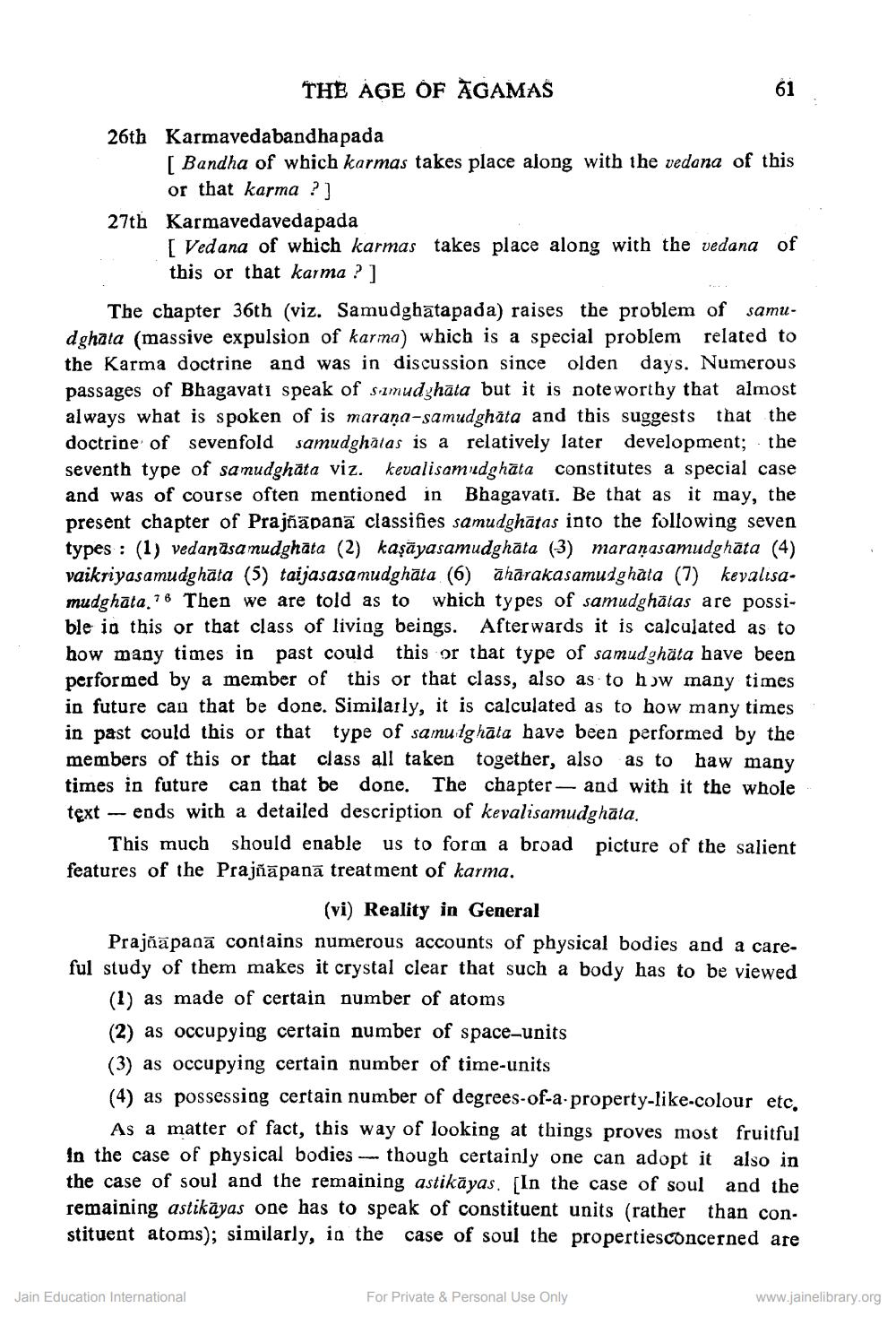________________
THE AGE OF AGAMAS
61
26th Karmavedabandha pada
Bandha of which karmas takes place along with the vedana of this
or that karma ? ] 27th Karmavedaveda pada
[ Vedana of which karmas takes place along with the vedana of this or that karma ? ]
The chapter 36th (viz. Samudghātapada) raises the problem of samudghata (massive expulsion of karma) which is a special problem related to the Karma doctrine and was in discussion since olden days. Numerous passages of Bhagavati speak of smudghata but it is noteworthy that almost always what is spoken of is marana-samudghata and this suggests that the doctrine of sevenfold samudghalas is a relatively later development; the seventh type of samudghäta viz. kevalisam dghāta constitutes a special case and was of course often mentioned in Bhagavati. Be that as it may, the present chapter of Prajñāpanā classifies samudghātas into the following seven types : (1) vedanasamudghāta (2) kaṣāyasamudghāta (3) maranasamudghāta (4) vaikriyasamudghāta (5) taijasasamudghāta (6) āhārakasamudghata (7) keyalisamudghata.76 Then we are told as to which types of samudghalas are possible in this or that class of living beings. Afterwards it is calculated as to how many times in past could this or that type of samudghata have been performed by a member of this or that class, also as to how many times in future can that be done. Similarly, it is calculated as to how many times in past could this or that type of samu tghāta have been performed by the members of this or that class all taken together, also as to haw many times in future can that be done. The chapter -- and with it the whole text -- ends with a detailed description of keyalisamudghala,
This much should enable us to form a broad picture of the salient features of the Prajñāpanā treatment of karma.
(vi) Reality in General Prajăā panā contains numerous accounts of physical bodies and a careful study of them makes it crystal clear that such a body has to be viewed
(1) as made of certain number of atoms (2) as occupying certain number of space-units (3) as occupying certain number of time-units (4) as possessing certain number of degrees-of-a-property-like.colour etc.
As a matter of fact, this way of looking at things proves most fruitful in the case of physical bodies -- though certainly one can adopt it also in the case of soul and the remaining astikayas. In the case of soul and the remaining astikāyas one has to speak of constituent units (rather than con. stituent atoms); similarly, in the case of soul the propertiesconcerned are
Jain Education International
For Private & Personal Use Only
www.jainelibrary.org




